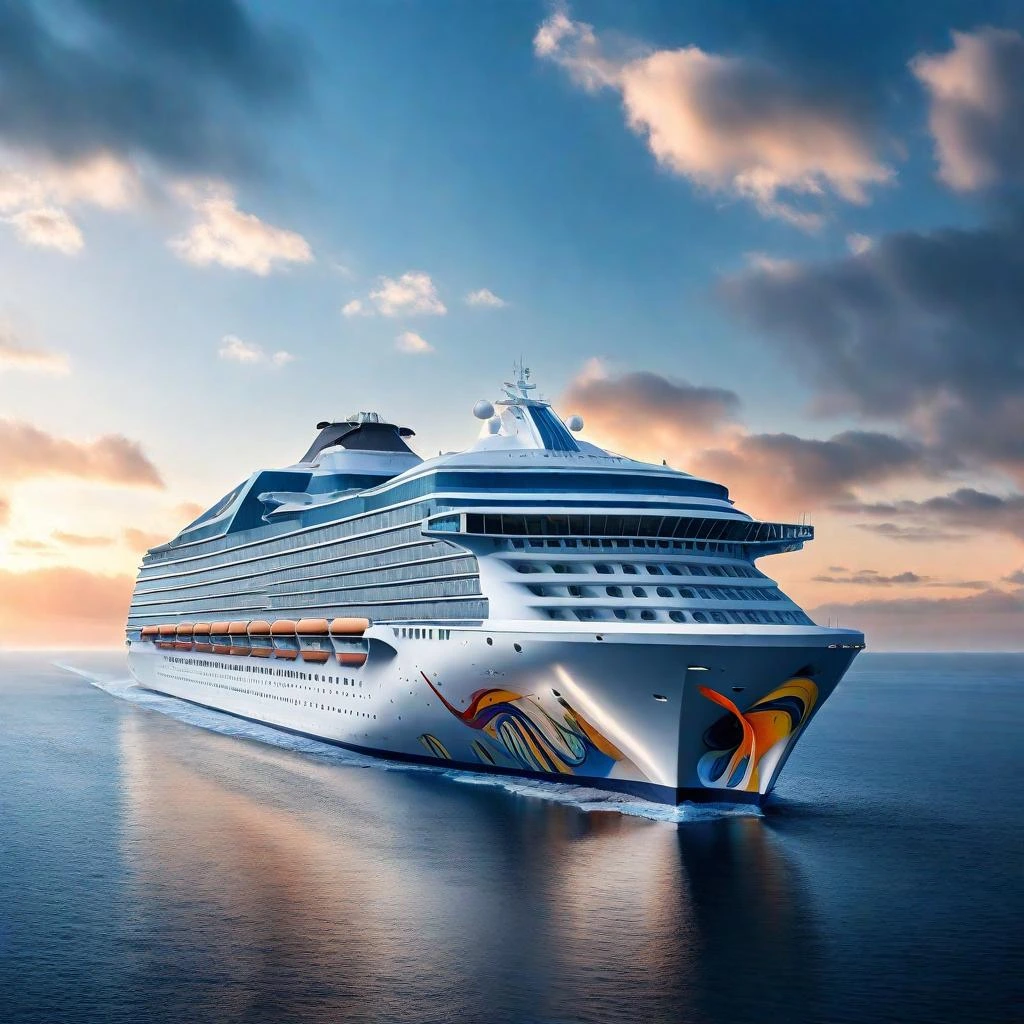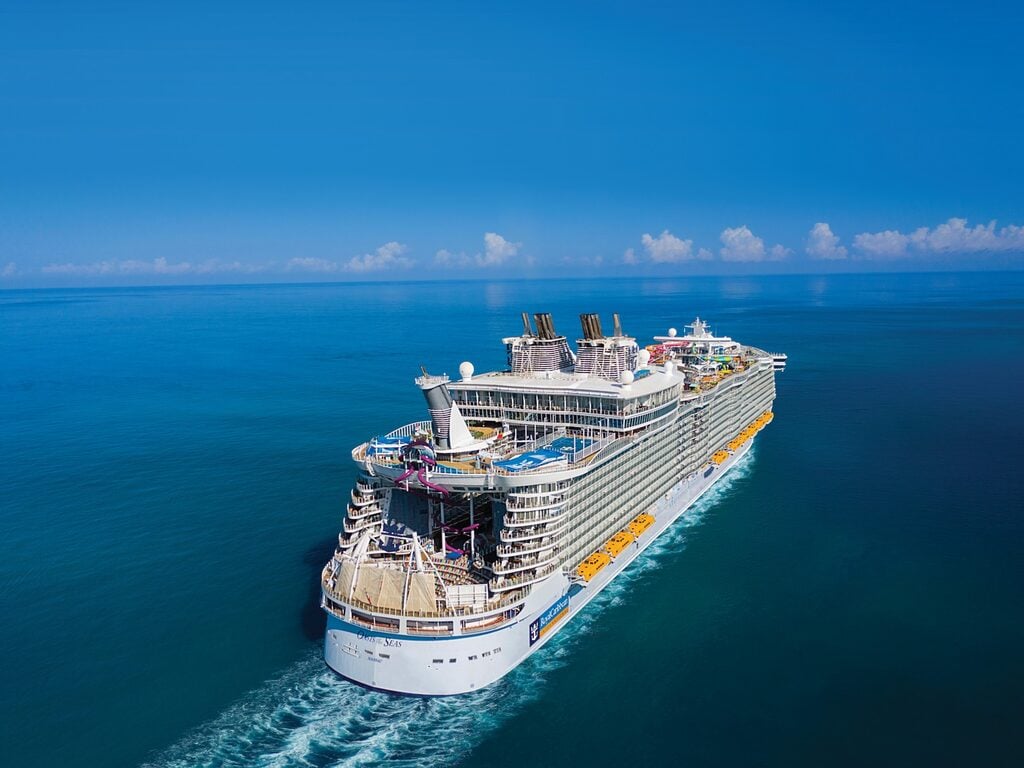Cruise ships are big, floating hotels. They take people on vacations across the sea. But how fast can these huge ships go?
What is a Cruise Ship?
A cruise ship is a large vessel. It carries passengers for pleasure voyages. The voyage itself and the ship’s amenities are part of the experience. Cruise ships can travel to many places. They can visit islands, cities, and other interesting spots.

How Fast Do Cruise Ships Travel?
Most cruise ships travel at speeds of about 20-25 knots. A knot is a measure of speed at sea. One knot equals about 1.15 miles per hour (1.85 kilometers per hour). So, cruise ships travel at about 23-29 miles per hour.
Top Speed of Cruise Ships
Some cruise ships can go faster. The fastest cruise ships can reach speeds of up to 30 knots. That is about 34.5 miles per hour (55.5 kilometers per hour). But they do not always travel at top speed. They usually travel slower to save fuel and to give passengers a smooth ride.
Factors Affecting Cruise Ship Speed
Several factors affect how fast a cruise ship can go:
- Size of the Ship: Larger ships are generally slower. They need more power to move through the water.
- Weather: Bad weather can slow down a ship. High winds and rough seas make it harder to travel fast.
- Route: The path a ship takes can affect its speed. Some routes have strong currents that can slow a ship down.
- Fuel Efficiency: Ships travel slower to save fuel. This helps reduce costs and is better for the environment.
In addition to these factors, a cruise ship’s itinerary plays a crucial role in determining its speed. Here’s how:
- Short Itineraries with Multiple Ports: Ships on shorter itineraries often have multiple ports of call. To keep up with the schedule and ensure timely arrivals and departures, these ships may need to maintain a slower pace.
- Longer Itineraries with Fewer Stops: Conversely, ships on longer itineraries with fewer stops have the flexibility to cruise at higher speeds. This allows them to cover greater distances between ports more efficiently.
Understanding all these elements can give you a clearer picture of why cruise ships travel at the speeds they do, balancing efficiency with customer experience.
Why Do Cruise Ships Travel at These Speeds?
Cruise ships travel at these speeds for several reasons:
- Comfort: Traveling slower makes the ride smoother. Passengers can enjoy their trip without feeling seasick.
- Safety: Traveling at a slower speed is safer. It helps the ship avoid accidents and navigate through tricky areas.
- Fuel Savings: Traveling slower saves fuel. This is important because fuel is a major cost for cruise lines.
Examples of Fast Cruise Ships
Here are some examples of fast cruise ships:
| Ship Name | Top Speed (knots) |
|---|---|
| Queen Mary 2 | 30 |
| Norwegian Bliss | 23.5 |
| Harmony of the Seas | 23 |
How Are Cruise Ships Powered?
Most cruise ships use diesel engines. Some modern ships use liquefied natural gas (LNG). These engines turn propellers that push the ship through the water. Some ships have special types of propellers called azipods. Azipods can turn in any direction. This makes the ship more maneuverable and can help it travel faster.
Technological Innovations: Revolutionizing Cruise Ship Speed and Efficiency
The maritime industry is witnessing a transformation, with technological advancements playing a pivotal role in enhancing cruise ship speed and efficiency. Here’s how:
Alternative Fuels and Hybrid Engines
Many cruise lines are now delving into the use of hybrid engines. By combining traditional propulsion systems with advanced technologies, these engines significantly boost efficiency. This fusion results in not only quicker transit times but also a decrease in fuel consumption.
Alternative fuels are another frontier. Liquefied natural gas (LNG) and biofuels are gaining traction as cleaner, more efficient sources. These alternatives promise to lower emissions while maintaining or even improving speed.
Energy-Efficient Designs
Shipbuilders are innovating like never before. New hull designs aimed at minimizing drag are becoming standard. Such designs streamline the ship’s movement through water, allowing for both enhanced speed and improved fuel economy.
Smart Technology Integration
Onboard smart systems are redefining operations. These technologies optimize routes by analyzing weather patterns and sea conditions in real-time. By selecting the most efficient routes, ships can maintain consistent speeds, ensuring quicker journeys without wasting energy.
Autonomous and Assisted Navigation
Automation is also charting a new course for efficiency. Advanced navigation systems enable semi-autonomous operations. Such systems assist in optimal route planning and fuel management, creating smoother and faster voyages.
By harnessing these cutting-edge technologies, the cruise industry is not only boosting speed and efficiency but also paving the way for a more sustainable future on the seas.
Frequently Asked Questions
How Fast Can A Cruise Ship Travel?
Modern cruise ships can travel at speeds between 20-24 knots (23-28 mph).
What Is The Average Speed Of A Cruise Ship?
The average speed of a cruise ship is around 21-24 knots (24-28 mph).
Do Cruise Ships Travel Faster At Night?
Cruise ships may travel faster at night to cover more distance while passengers sleep.
How Fast Is The Fastest Cruise Ship?
The fastest cruise ship, Queen Mary 2, can reach speeds of 30 knots (35 mph).
Conclusion
Cruise ships are amazing vessels. They travel at speeds of about 20-25 knots. Some can go as fast as 30 knots. Many factors affect their speed. They travel at these speeds for comfort, safety, and fuel savings. Next time you are on a cruise, you will know just how fast you are going!

